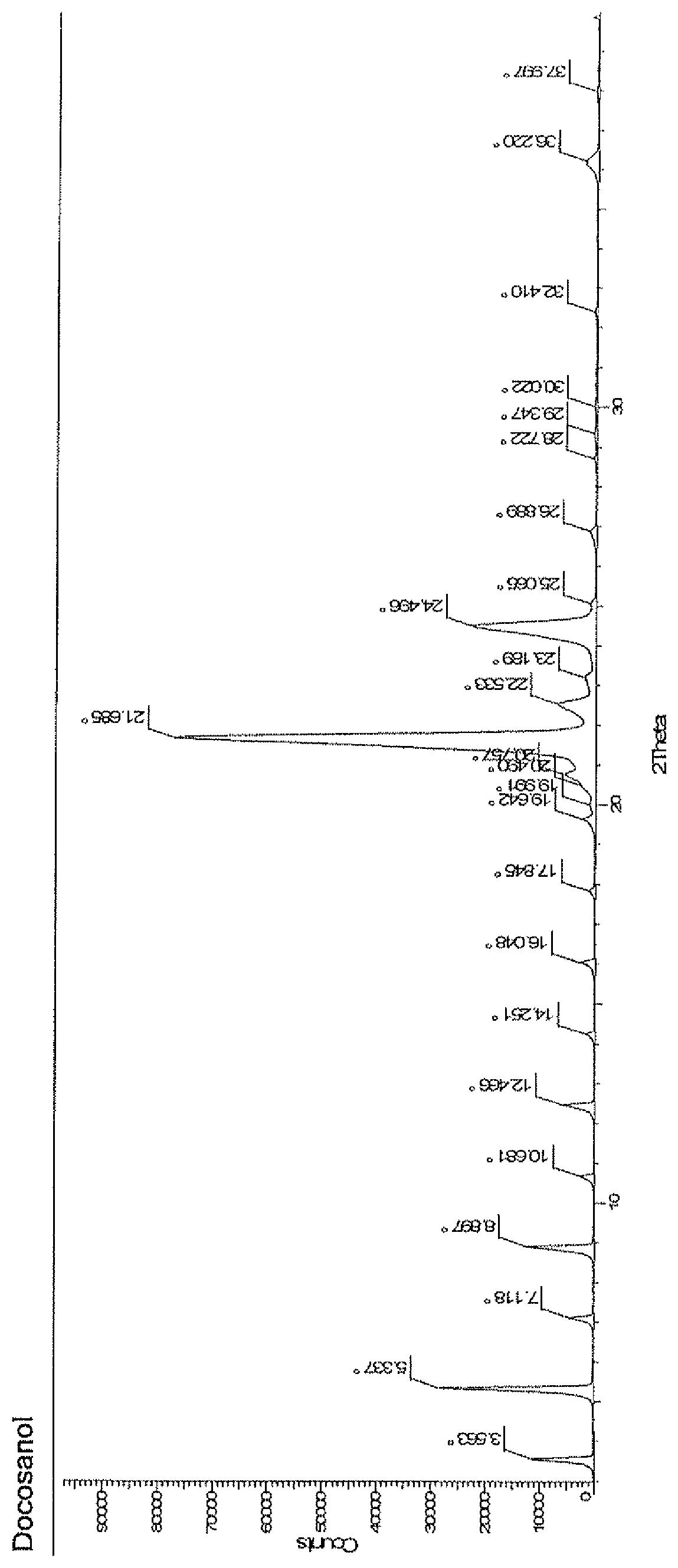Process for the preparation of docosanol
a technology of docosanol and process, which is applied in the field of process for the preparation of docosanol, can solve the problems of increasing the number of steps, not having commercial/readily available raw materials for large-scale manufacturing, and requiring special attention
- Summary
- Abstract
- Description
- Claims
- Application Information
AI Technical Summary
Benefits of technology
Problems solved by technology
Method used
Image
Examples
example-1
Preparation of Docosanoic Acid:
[0039]13-Docosenoic acid (100 g) was suspended in THF (1500 ml) at 20-30° C. and hydrogenated in the presence of Palladium on charcoal (5 g, 10% w / w, 50% wet) at 20-30° C. over a hydrogen pressure of 6-8 Kg / cm2. After completion of reaction the catalyst was filtered off, solvent was evaporated from the filtrate under reduced pressure (20-40 mm Hg) at 40-50° C. to get a white colour residue. The above residue was suspended in methanol (1000 ml) and heated to 60-65° C. to obtain a clear solution and cooled to 20-30° C. slowly over a period of 30±5 min stirred for an hour at 20-30° C. The resulting solid was filtered and dried under reduced pressure (10-20 mm Hg) at 40-45° C. to afford 90.83 g of Docosanoic acid.
[0040]Yield: 90.3% of theory
[0041]Chromatographic purity (by GC): >98%
example-2
Preparation of Docosanol:
[0042]Sodium borohydride (2.9 g) was suspended in THF (100 ml) at 20-30° C. and cooled to 0-5° C. Thereafter, added a solution of iodine (7.5 g) dissolved in THF (30 ml) over a period of 1-2 h at 0-5° C. followed by a solution of docosanoic acid (20 g) dissolved in THF (140 ml) in 30-40 min. The reaction mixture was stirred for 2-4 h at 20-30° C. After completion of reaction, the reaction mixture was carefully quenched with dil. HCl (30 ml, 3N) at 20-30° C. and evaporated the solvent under reduced pressure (40-50 mm Hg) at 40-45° C. to get a turbid oily mass. To the above residue DM water (200 ml) was added and extracted the product in methyl-tert-butyl ether (300 ml). The organic extract was washed with an aqueous solution of 10% w / w sodium hydroxide (100 ml), an aqueous solution of 5% w / w sodium metabisulfite and finally with DM water (100 ml). Thereafter, the organic extract was concentrated under reduced pressure (20-40 mm Hg) at 40-50° C. to get a white...
example-3
Preparation of Docosanol:
[0045]Sodium borohydride (22.3 g) was suspended in tetrahydrofuran (500 ml) at 25-30° C. and cooled to 0-5° C. A solution of Docosanoic acid (100 g) dissolved in tetrahydrofuran (1.0 Lt) was added slowly over a period of 30±5 min at 0-5° C. Borontrifluoride diethyletherate (104.0 g) was added slowly to above reaction mixture in 30±5 min at 0-5° C. The reaction mixture was stirred at 20-30° C. and the progress of the reaction was monitored by qualitative HPLC analysis. The above reaction mass was cooled to 0-5° C. and DM water (200 ml) was added slowly over a period of 30±5 min at 0-5° C. The reaction mixture was stirred at 20-30° C. for 30±5 min, and then concentrated under reduced pressure (˜20 mm Hg) at 40-45° C. The concentrated mass was cooled to 20-30° C. and methyl-tert-butyl ether (2.0 Lt) was added. To the reaction mass 10% w / w aqueous sodium hydroxide solution [1.0 Lt, prepared by dissolving sodium hydroxide (100 g) in DM water (1.0 Lt)] was added a...
PUM
| Property | Measurement | Unit |
|---|---|---|
| pressure | aaaaa | aaaaa |
| pressure | aaaaa | aaaaa |
| pressure | aaaaa | aaaaa |
Abstract
Description
Claims
Application Information
 Login to View More
Login to View More - R&D
- Intellectual Property
- Life Sciences
- Materials
- Tech Scout
- Unparalleled Data Quality
- Higher Quality Content
- 60% Fewer Hallucinations
Browse by: Latest US Patents, China's latest patents, Technical Efficacy Thesaurus, Application Domain, Technology Topic, Popular Technical Reports.
© 2025 PatSnap. All rights reserved.Legal|Privacy policy|Modern Slavery Act Transparency Statement|Sitemap|About US| Contact US: help@patsnap.com



